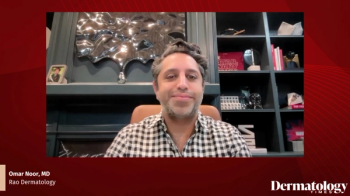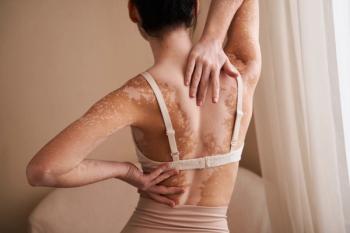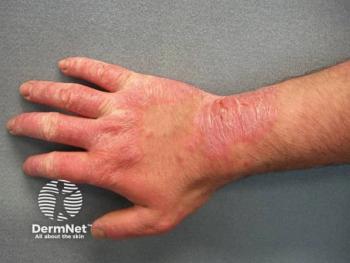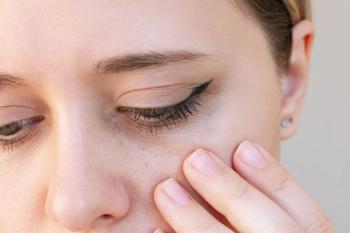
Frequency-Specific Sound Enhances Tissue Regrowth
Key Takeaways
- Infrasound enhances bone healing by increasing bone mineral content and density, and modulating neuro-osteogenic pathways.
- Low-frequency audible sound improves fibroblast migration and epidermal repair, with wave orientation affecting therapeutic outcomes.
Acoustic stimulation using infrasound and low-frequency sound enhances wound healing, promoting cellular activity and tissue repair in innovative, non-invasive ways.
Traditionally, wound healing interventions have centered on pharmacological agents, surgical techniques, and biophysical therapies such as ultrasound.1 However, emerging evidence points to a novel therapeutic avenue—acoustic stimulation using infrasound (1–20 Hz) and low-frequency audible sound (20 Hz–20 kHz)—as a promising, non-invasive tool to enhance wound healing and tissue repair.2
A systematic review by Armand et al. evaluates the effects of these lower-frequency acoustic waves on cellular functions involved in wound healing, including bone regeneration, fibroblast migration, and epidermal repair. By synthesizing evidence from 5 selected in vitro and in vivo studies, the review highlights the nuanced yet significant biological responses elicited by acoustic stimulation across various tissue types.3
Infrasound and Bone Regeneration
Two studies included in the review specifically examined the role of infrasound in promoting bone healing. Long et al. demonstrated that rats with stabilized femoral fractures exposed to low sound pressure level (LSPL) infrasound (12–20 Hz) twice daily for 6 weeks exhibited enhanced bone healing, as evidenced by increased bone mineral content (BMC) and bone mineral density (BMD). This improvement was corroborated by elevated expression of calcitonin gene-related peptide (CGRP) and reduced levels of neuropeptide Y (NPY), pointing to modulation of the neuro-osteogenic axis.
Complementing these in vivo findings, He and Fan reported that infrasound exposure (16 Hz at 90 dB for 60 minutes) significantly increased proliferation and osteogenic differentiation of rat bone marrow mesenchymal stem cells (BMSCs) in vitro. The treatment also upregulated survivin, an anti-apoptotic protein, suggesting that infrasound may support bone regeneration by both promoting cellular growth and enhancing survival.
These results collectively suggest that infrasound could serve as a therapeutic modality for orthopedic injuries or conditions where mechanical stress is limited, such as in osteoporotic or bedridden populations.
Low-Frequency Audible Sound and Fibroblast Activity
Audible sound within the 20–20,000 Hz range also shows promise, particularly in modulating fibroblast behavior critical to dermal wound healing. Mohammed et al. found that brief exposure (5 minutes) to 100 Hz acoustic vibrations significantly enhanced fibroblast migration in both human and murine cells. This was accompanied by morphological changes such as the formation of lamellipodia and filopodia, essential structures for directed cell movement.
Further, Enomoto et al. demonstrated that the directionality of vibration affects fibroblast migration. Horizontal (orthogonal) acoustic waves enhanced collective migration and glucose metabolism, while vertical (parallel) waves diminished both. These findings underscore the importance of wave orientation in optimizing therapeutic outcomes.
Keratinocyte Modulation and Skin Barrier Recovery
The epidermal response to acoustic stimulation was evaluated by Denda and Nakatani, who exposed mice with tape-stripped skin to sound frequencies of 10–30 kHz. Of these, 20 kHz was the most effective in accelerating skin barrier recovery, likely through increased keratinocyte activity and lamellar body secretion, which are vital for skin homeostasis. This finding supports the potential of acoustic sound in treating superficial wounds or skin conditions characterized by impaired barrier function.
Clinical Implications and Limitations
The reviewed studies reveal that acoustic frequencies have frequency-specific and cell-type-dependent effects on wound healing processes. Infrasound appears particularly effective for stimulating osteogenesis and bone repair, while audible sound can enhance fibroblast migration and epidermal regeneration. These modalities, being non-invasive and potentially cost-effective, could be adapted for both clinical and at-home care settings.
However, several limitations persist. The reviewed studies primarily involved small sample sizes, variable methodologies, and preclinical models, limiting the generalizability of findings. Moreover, the underlying molecular mechanisms of mechanotransduction in response to acoustic stimulation remain incompletely understood.
Researchers stated future research must focus on elucidating the precise bioacoustic parameters—such as frequency, duration, intensity, and wave orientation—that optimize healing. Rigorous, large-scale clinical trials are also essential to validate efficacy, determine safety, and facilitate the integration of acoustic therapy into standard wound care protocols.
Conclusion
The review stated acoustic stimulation through infrasound and low-frequency audible sound represents an exciting frontier in regenerative medicine. By modulating key cellular behaviors involved in wound repair, these non-invasive modalities offer a new dimension in wound therapy, especially for chronic or complex wounds. Continued interdisciplinary research is essential to unlock their full clinical potential.
References
- Yin J, Zhang S, Yang C, et al. Mechanotransduction in skin wound healing and scar formation: Potential therapeutic targets for controlling hypertrophic scarring. Front Immunol. 2022;13:1028410. Published 2022 Oct 17. doi:10.3389/fimmu.2022.1028410
- Brugger MS, Baumgartner K, Mauritz SCF, et al. Vibration enhanced cell growth induced by surface acoustic waves as in vitro wound-healing model. Proc Natl Acad Sci U S A. 2020;117(50):31603-31613. doi:10.1073/pnas.2005203117
- Armand AC, Bikaran M, Gardner TB, Matthew MK. The role of infrasound and audible acoustic sound in modulating wound healing: A systematic review. Int Wound J. 2025 May;22(5):e70243. doi: 10.1111/iwj.70243. PMID: 40288769; PMCID: PMC12034371.
Newsletter
Like what you’re reading? Subscribe to Dermatology Times for weekly updates on therapies, innovations, and real-world practice tips.



















